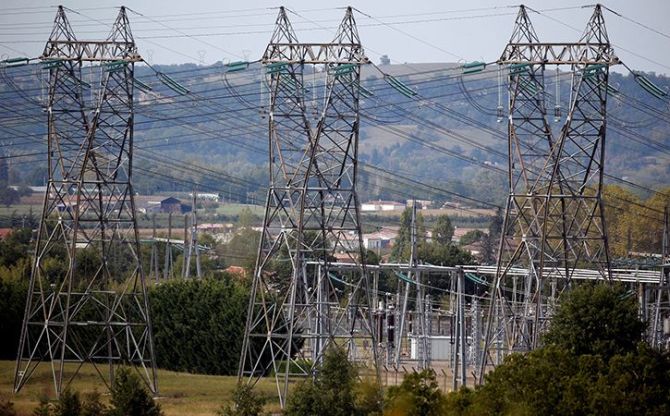The ambitious proposal by the power ministry to allow network sharing between distribution licensees operating in the same geographical area will face three key challenges, said a former bureaucrat.

Photograph: Mukesh Gupta/Reuters
According to him, they include sharing of fixed cost of legacy power purchase agreements (PPAs), cross-subsidy burden and discom losses above normative levels.
The proposal is part of the new Electricity (Amendment) Bill 2025 floated by the ministry for public consultation.
This provision for network sharing among distribution licensees was there in the last Electricity (Amendment) Bill too.
That Bill lapsed in 2024.
The existing Electricity Act 2023 provides that the regulator can grant a licence to two or more persons for distribution of electricity through their own distribution system within the same area.
And, no such applicant shall be refused a licence on the ground that there already exists a licensee in the same area for the same purpose.
The draft Bill has proposed granting licence to two or more persons for distribution of electricity through their own “or shared” distribution system in the same area.
It would be subject to applicable charges and regulatory oversight by the commission.
“The provision will first face the issue of sharing fixed costs from legacy PPAs of the incumbent licensee.
“Second, managing the cross-subsidy imbalance that will occur because the new licensee will have a different consumer mix than the existing licensee,” said Alok Kumar, former secretary, Ministry of Power, who is also the Director General of All India Discom Association.
A PPA’s fixed cost, often called the capacity charge, covers the power plant’s fixed operational and capital expenses like debt service, return on investment, and fixed operating costs.
The other component of a PPA, called variable cost or energy charge, is paid for the actual electricity produced.
It covers variable costs such as fuel and variable operations and maintenance, which are often passed on to the buyer.
The consumer mix of power distribution companies typically comprises residential, commercial and industrial users.
High paying industrial consumers generally cross-subsidise the low paying residential consumers.
Network sharing could lead to a change in the consumer mix and thus the cross-subsidy liability too.
The third issue with network sharing relates to a situation where the losses in the distribution network are more than the normative losses that the regulator commission is allowing.
“In that case, what will happen to the extra loss level and who will bear that loss?
“The new licensee might argue that it will only bear the normative loss. In such a scenario, how will the losses be split?” Kumar asked.
The Electricity Act 2003 permits multiple distribution licensees in the same area to achieve the core objective of promoting competition.
“However, practical experience has shown that allowing multiple licensees with separate networks in the same area can lead to unnecessary duplication of distribution networks.
“This results in wastage of scarce capital and land resources,” the power ministry said in its draft Bill.
The network sharing proposal is in line with the non-discriminatory open access provisions under Sections 42 and 49 of the Electricity Act.
It ensures that distribution systems will be used without discrimination by multiple users.
The amendment also seeks to empower the appropriate commission to develop a regulatory framework for managing multiple licensees in the same area.
This framework will ensure that network expansion and augmentation are carried out efficiently and without duplication of infrastructure.




